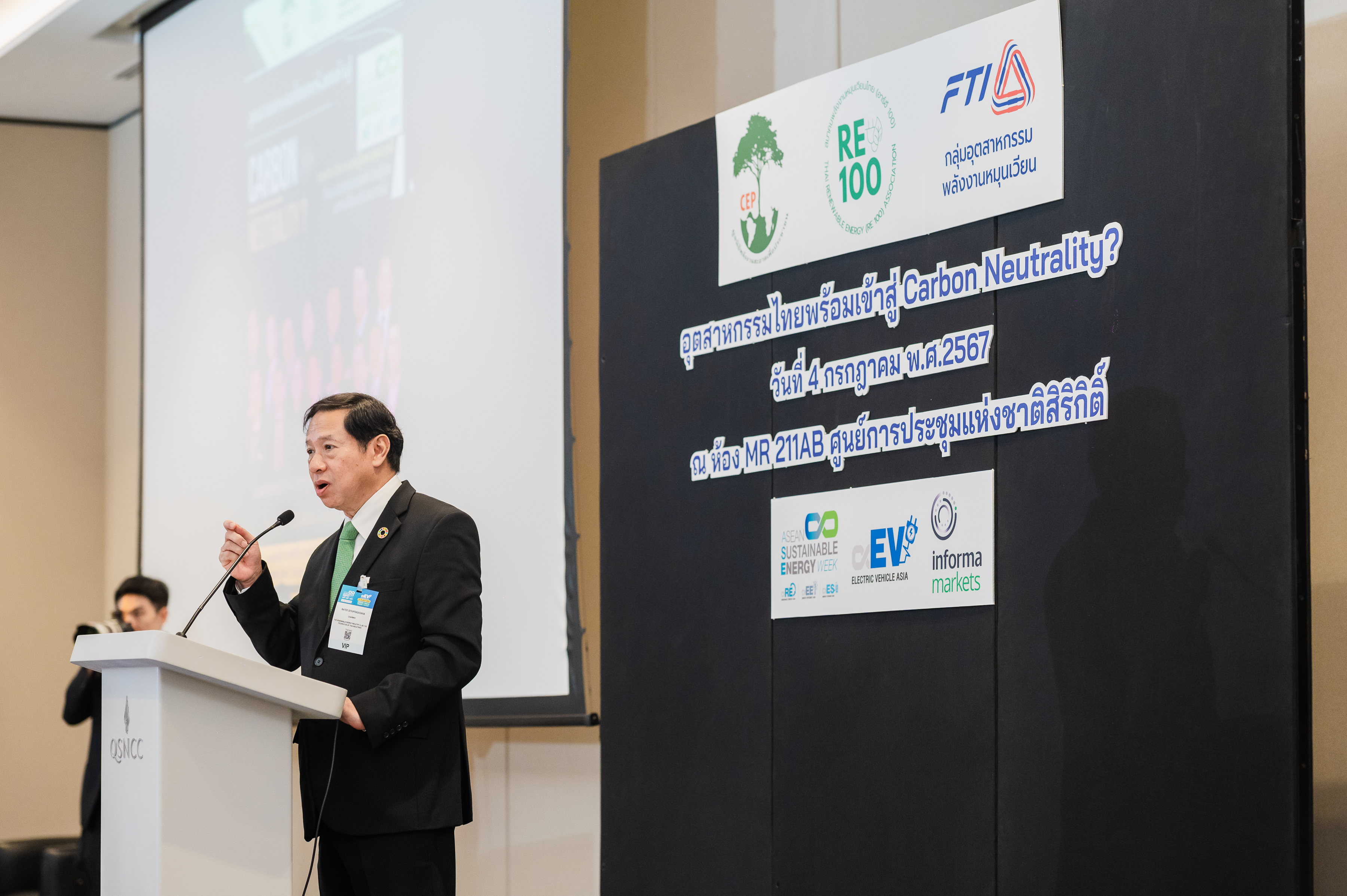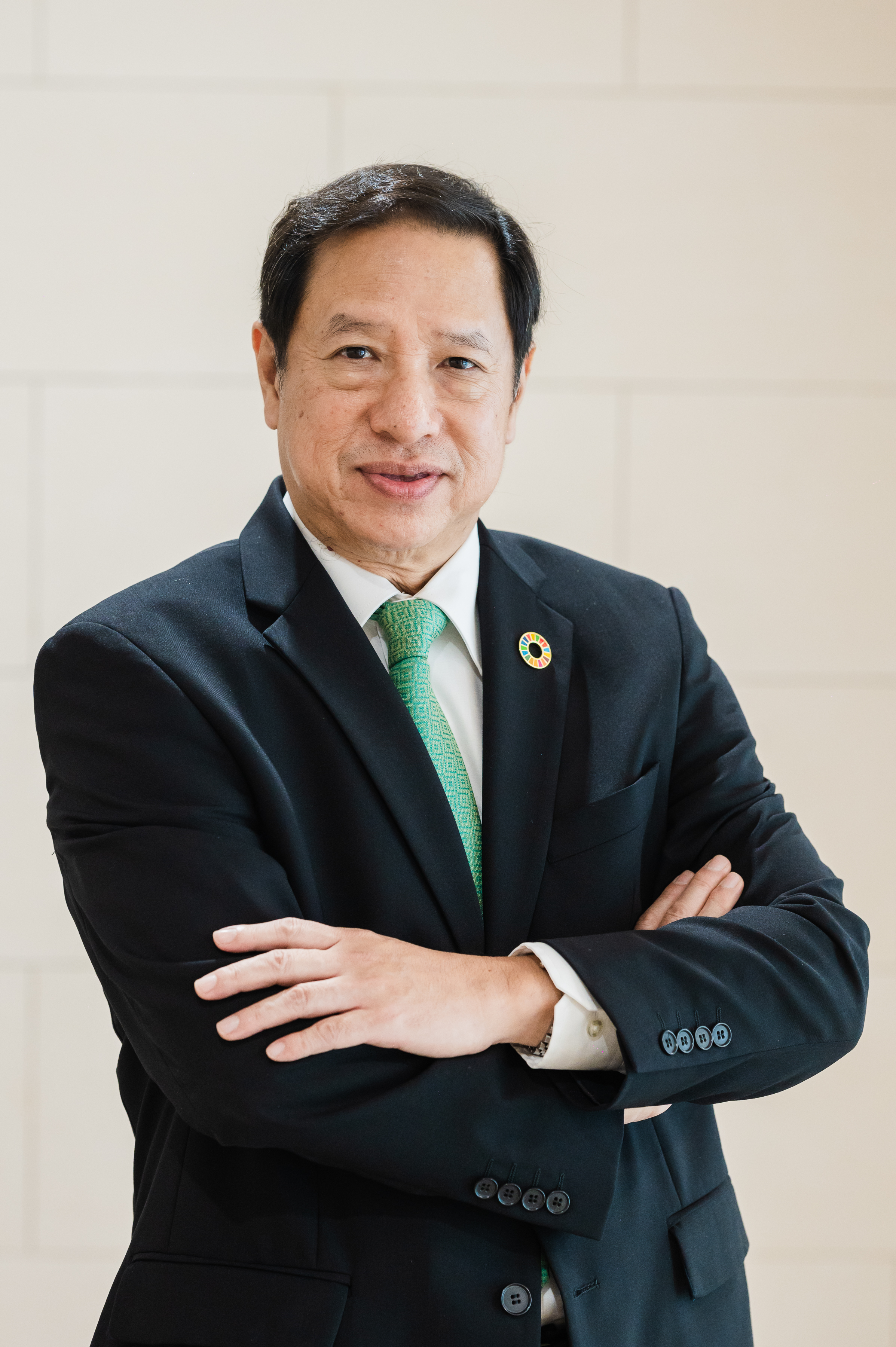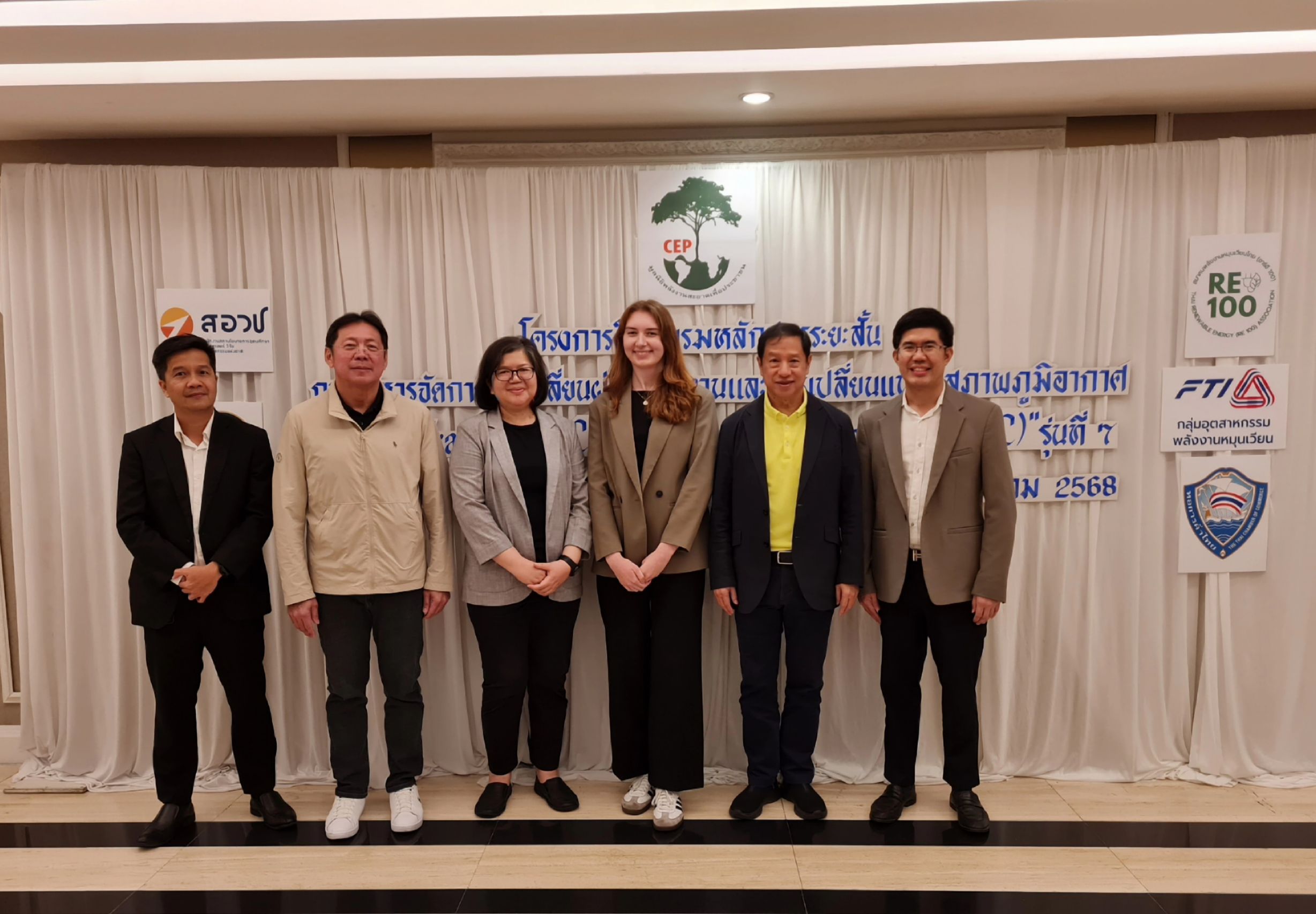
13 minute read
Industry voice: Higher renewable energy goals and flexible policies needed for Thailand
Natee Sithiprasasana
Thailand is navigating a crucial phase in its energy transition from fossil base to renewable energy base. The target of 51 per cent renewable energy generation output by 2037 set in the draft of PDP 2024 (Power Development Plan) seems to be not ambitious enough for high demand of green supply chain from the industries. To gain a deeper understanding of the country's progress and challenges, GTCC is honoured to speak with Natee Sithiprasasana, the Chairman of the Renewable Energy Industry Club, and Managing Director of Surat Green Group. Here he shares his insights regarding Thailand’s renewable energy landscape, the role of solar and bioenergy, and the regulatory reforms necessary to drive the country towards a sustainable energy future.

What is the current situation of the renewable energy (RE) industry in Thailand?
The RE industry in Thailand is in a phase of active promotion and expansion, with the need to increase its share. Currently, RE generation output is about 22 per cent. But if without domestic and import of hydro power generation 3.5% and 7.4% respectively, the RE generation output in Thailand (kilowatt-hours) stands at only 11 per cent. It is good to note that the first RE generation of Thailand under power purchase scheme of small power producer (SPP with capacity of 10-90 MW) is from biomass, commercially supplied to the grid in 1992. Later on in 2007, promotion program to support of expensive RE technology i.e. solar and wind started. Smaller capacity was introduced, which is very small power producer (VSPP with capacity of not more than 10 MW). The program was ‘Adder’ system to cover reasonable return on investment for the RE which could not meet grid parity for both SPP and VSPP. The Adder payment term is limited for each technology, such as 10 years for solar and wind and 7 years for biomass and biogas. Once the Adder payment is ended, remaining tariff to SPP and VSPP is referenced to the grid parity tariff. It can be said that those promotions are of good start. RE investment in Thailand by private power producers is always ready and await for more practical ecosystem to cope with the current demand of green electricity for green supply chain. The situation now is that Thailand needs to transition from regulated market to deregulated market and to start decentralization, digitalization and decarbonization. Step by step liberalizing green electricity is needed to accommodate various RE technologies, such as peer to peer, prosumer, third-party access, smart grid, distributed energy resource. The most challenging factor is whether the policy makers are willing to change the policy from the Enhanced Single Buyer to Deregulated Market or not. The obstacles are still there, but there is optimism for future improvements.
What are the key milestones of the RE sector in Thailand in recent years?
One of our key initiatives was working with the Energy Regulatory Commission (ERC) on a sandbox project to test virtual/sleeved power purchase agreements (PPAs) and third-party access to the grid to supply green electricity. Unfortunately, this project has been halted. The government’s focus is shifted to a new power purchase program for RE sources with no fuel cost. larger-scale solar, wind, and biogas projects.
That program was announced in 2022 to purchase power between 2022-2030 from all capacity size of biogas, wind, solar farm, and only >10-90 MW solar farm + BESS (battery and energy storage system). Total purchase is 5,200 MW. Big Lot is nick name of this power purchase program. This purchase program was completed and the PPAs were already signed.
Following the big lot, additional purchase was planned in 2024 for the same RE sources with of 3,600 MW. The first phase of this additional purchase was announced for 2,180 MW to be supplied to the grid between 2026-2030. However, this purchase and the PPAs signing were on hold by the order of the National Energy Policy Committee (NEPC). This is believed to be due to method of the purchase method.
In the past, the power purchase from RE was done by different methods starting from (1) firstcome, first-served, (2) lucky draw after pass-fail method, (3) competitive bidding. For this big lot, the purchase method is different from the previous ones. It is set for scoring evaluation by an appointed subcommittee, accused to be not so transparent and subjective.
In short, the sandbox for testing for deregulated market is halted. But the big lot under the existing enhanced single buyer or regulated market is continued.

Which RE source do you consider the most promising for Thailand, and why?
Both solar and bioenergy (biomass and biogas) are highly promising for Thailand. Solar energy, especially when paired with battery storage, is currently leading, due to decreasing costs and technological advancements.
However, bioenergy, while more expensive, offers significant benefits, such as job creation and economic stimulation in rural areas. In the long-term, solar will dominate, but bioenergy will remain critical for sustainability and energy security, contributing to a diversified energy mix.
What are Thailand's competitive advantages compared to other ASEAN countries in the RE sector?
Thailand has advanced grid infrastructure, a strong foundation in RE development, and government support through subsidies and power purchase agreements. Additionally, Thailand has been a pioneer in RE development, with biomass from about 30 years ago, and the development of solar energy and wind power for almost 20 years.
The government also played a crucial role by introducing subsidies and creating schemes to support solar projects, adding a surcharge to the electricity tariff to make solar energy more competitive. Despite competition from neighbouring countries like Vietnam, Thailand's regulatory clarity and transparency make it a key player in Southeast Asia's RE market.
What are the main challenges Thailand currently faces in renewable power generation and transmission, and what solutions could help address these issues?
The primary challenge is the current regulatory framework, which does not provide enough flexibility to meet the rapid demands of the green transition. The existing policy and plans lack ambition, particularly the target of increasing RE generation output to 51 per cent by 2037, which would come from domestic RE only about 36 per cent to the energy grid. This makes it difficult for Thailand to meet its carbon neutrality target in 2050. And it is even more difficult to help industry sectors to meet their carbon neutrality target in 2030-2035. Thailand must shift toward a more flexible regulatory environment, such as exploring sandbox initiatives to test alternative market models. This will allow for better adaptation to global market demands and help the country remain competitive in the RE sector.
The primary challenge is the current regulatory framework, which does not provide enough flexibility to meet the rapid demands of the green transition.
How do you assess the current version of the Power Development Plan (PDP) in terms of its ambition and feasibility? What measures are required to reach that goal of increasing RE to 51 per cent by 2037?
I feel the current version of the PDP, with the target of 51 per cent RE by 2037, is not ambitious enough, and insufficient given the global climate goals. Current plans, which include maintaining a significant share of fossil fuels, particularly natural gas, contradict global commitments and could hinder progress. For example, the ethanol blending rate was reduced from E20 to E10, despite earlier commitments to support the ethanol industry. This kind of lack of follow-through is a broader issue with the PDP, and it highlights the need for a more ambitious and actionable plan.
To meet the desired goals, Thailand needs to phase down and gradually phase out fossil fuels faster and adopt a more flexible, evolving plan that adjusts to emerging technologies and market shifts. The current PDP should focus on setting guidelines rather than rigid quotas, allowing for dynamic growth in RE. A fixed quota will make it difficult for the industry to adapt to changing circumstances. The government should also adopt changes such as incorporating third-party access to the electricity grid, accommodating new technologies, enabling peer-to-peer energy trading, and facilitating the growth of decentralised energy systems. Without these changes, the government risks falling short of its RE goals.
How does international collaboration and cooperation with the private sector support Thailand's RE transition?
In Thailand, international investors and regional players have shown strong interest in supporting our RE transition, and they see huge potential as we have sufficient resources, in addition to a clear willingness from both local and international investors to join the RE business in Thailand. Organisations like the Deutsche Gesellschaft für Internationale Zusammenarbeit (GIZ, or German International Cooperation Society) and the International Energy Agency (IEA) have contributed research, technological support, and funding to Thailand including the Thai Renewable Energy (RE100) Association’s project which will be funded for four years starting in 2024.
The next step is to focus on the demand side, shifting from the supply side that we focused on in the past to build infrastructure, facilities and set regulations. Demand-side pressure is essential, with multinational corporations needing to push for clean energy commitments. Technological partnerships, particularly with Chinese suppliers for solar panels and batteries, have helped drive down costs, making renewable energy more accessible. Green hydrogen also represents a potential future solution, with international collaboration helping to make it more viable, while costs for solar and battery technologies continue to decrease. Such partnerships will enable Thailand to meet its clean energy goals while strengthening its position as a competitive player in the global renewable energy market.
What do you see as the biggest opportunity for Thailand’s RE sector over the next five to ten years, and how can the country capitalise on them?
Significant opportunities will lie particularly in solar energy, battery storage, and green hydrogen. Solar power, combined with advancements in battery technology, presents a major opportunity for decentralised and efficient energy systems. The integration of solar with storage systems could address intermittency issues and make renewable energy more reliable. Green hydrogen also holds promise, especially if the country develops large-scale projects to produce and utilise hydrogen as a clean fuel.
Thailand can capitalise on these opportunities by creating a regulatory environment that supports these innovations, such as enabling prosumer (individuals who are both producer and consumer) models, facilitating decentralised energy systems, and liberalising the energy market. Collaboration with international organisations and private enterprises could also help accelerate the development and implementation of these technologies.
Currently the regulatory environment limits innovations and remains one of the greatest challenges to the opportunities. For example, under current regulations, households with rooftop solar installations cannot sell their excess energy to neighbours. Allowing such transactions could unlock new possibilities for local energy trading and self-sufficiency. The introduction of a carbon credit scheme, where homeowners could generate carbon credit through their solar production and trade them for rewards, could further incentivise renewable energy adoption.

What are the key initiatives and priorities for the Renewable Energy Industry Club over the next few years, and how will the club contribute to Thailand’s RE transformation?
The Renewable Energy Industry Club, as part of the Federation of Thai Industries, aims to bridge the gap between the supply and demand sides of the renewable energy market. We advocate for supportive regulations, pilot innovative projects, and collaborate with international organisations to drive meaningful change in Thailand’s renewable energy sector. One key initiative is to establish a platform for dialogue between energy producers and consumers, enabling both sides to share their needs and collaborate on solutions. This could help ensure that the regulatory framework aligns with the requirements of both the supply and demand sectors.
The club also plans to continue its active involvement in organising energy exhibitions, seminars, and panel discussions to educate the public and engage with government officials. These discussions cover a wide range of topics related to renewable energy, helping to raise awareness and advocate for policy changes. Additionally, the club is working on initiatives related to greenhouse gas reduction and big data. A major project involves creating a comprehensive emissions database, which will help policymakers create effective strategies for achieving renewable energy targets. Despite challenges in securing funding, the club is pushing forward with this project in collaboration with stakeholders.

We are also working on initiatives such as gathering emissions data to support better policymaking and developing a mobile app to make carbon credits more accessible to individuals. The app allows users, especially tourists, to offset their carbon footprint in manageable amounts, contributing to the country’s decarbonisation. The app is still under development.
How does your role as Managing Director of Surat Green Group contribute to the development of the Renewable Energy Industry Club? What are the most critical actions needed from both the private sector and government to achieve Thailand’s renewable energy targets?
My role as Managing Director of Surat Green Group allows me to bring real-world experience and expertise in biomass energy to my leadership of the Renewable Energy Industry Club. At Surat Green Group’s biomass power plant, we utilise empty fruit bunches (EFB) from oil palm trees. This process helps reduce methane emissions by converting waste into energy, which is then sold to the grid. Additionally, we have developed a biogas power plant to capture methane from wastewater generated during the fuel-handling process, further contributing to renewable energy generation.
My dual roles give me a unique perspective on the balance between the two sectors. From my position in the private sector, I can see the challenges businesses face in navigating the regulatory landscape, while my leadership role in the Renewable Energy Industry Club allows me to advocate for policy changes that can help create a more favourable environment for renewable energy development.
To achieve Thailand’s renewable energy targets, both the private sector and government must work together. The private sector needs to advocate for a more open and competitive energy market, while the government needs to create policies that support this transition. Regulatory reforms, such as third-party access to the electricity grid, are essential to fostering competition and increasing the availability of green energy.
What changes would you recommend to ensure that Thailand stays on track towards its renewable energy targets?
We need to shift from a regulated to a more liberalised market, supported by regulatory tools to grow the green supply chain. Key developments include peer-to-peer energy trading, prosumer models, smart grids, microgrids, and increased solar power integration with battery storage.
One critical change would be introducing third-party access to the electricity grid, similar to the model used in the natural gas sector. This would allow independent renewable energy producers to connect clean energy directly to the grid, enabling businesses and consumers to sign virtual PPAs for green electricity. Although the national grid still relies heavily on fossil fuels, this model would help meet the growing demand for clean energy.
These changes would foster a more flexible, competitive, and transparent energy market, helping Thailand achieve its renewable energy goals.
Interviewed by Chadaphan Maliphan and Anine Mann, GTCC Team
Contact details:
Natee Sithiprasasana
Chairman of the Renewable Energy Industry Club
Federation of Thai Industries (FTI)
Tel & Line: +66 81 829 5885
www.re-fti.org










